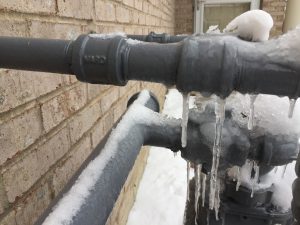What are your opinions about Prevent Frozen Pipes ?

Winter can wreak havoc on your plumbing, especially by freezing pipes. Right here's just how to stop it from taking place and what to do if it does.
Intro
As temperature levels drop, the risk of frozen pipelines rises, possibly leading to pricey fixings and water damages. Recognizing exactly how to avoid frozen pipelines is critical for home owners in chilly climates.
Understanding Icy Pipes
What causes pipelines to freeze?
Pipelines freeze when exposed to temperature levels below 32 ° F (0 ° C) for expanded periods. As water inside the pipelines freezes, it increases, putting pressure on the pipeline walls and possibly causing them to break.
Risks and problems
Icy pipes can bring about supply of water disturbances, residential property damages, and expensive fixings. Burst pipes can flood homes and trigger considerable structural damage.
Indications of Frozen Water Lines
Recognizing icy pipelines early can prevent them from rupturing.
How to identify frozen pipes
Search for reduced water flow from faucets, unusual smells or sounds from pipelines, and noticeable frost on subjected pipes.
Prevention Tips
Protecting susceptible pipes
Wrap pipelines in insulation sleeves or make use of warm tape to safeguard them from freezing temperatures. Concentrate on pipelines in unheated or outside areas of the home.
Home heating methods
Keep indoor areas properly heated, particularly areas with pipes. Open closet doors to allow cozy air to circulate around pipelines under sinks.
Protecting Outside Plumbing
Garden tubes and outdoor taps
Disconnect and drain yard hoses before winter months. Install frost-proof spigots or cover outside taps with insulated caps.
What to Do If Your Pipes Freeze
Immediate actions to take
If you believe icy pipelines, maintain faucets open to eliminate stress as the ice thaws. Make use of a hairdryer or towels taken in warm water to thaw pipelines gradually.
Long-Term Solutions
Architectural changes
Take into consideration rerouting pipelines far from outside walls or unheated locations. Add added insulation to attic rooms, basements, and crawl spaces.
Updating insulation
Purchase high-quality insulation for pipelines, attic rooms, and walls. Appropriate insulation helps keep regular temperature levels and decreases the risk of icy pipes.
Conclusion
Protecting against icy pipes calls for positive measures and fast responses. By recognizing the causes, indicators, and preventive measures, home owners can safeguard their pipes throughout cold weather.
5 Ways to Prevent Frozen Pipes
Drain Outdoor Faucets and Disconnect Hoses
First, close the shut-off valve that controls the flow of water in the pipe to your outdoor faucet. Then, head outside to disconnect and drain your hose and open the outdoor faucet to allow the water to completely drain out of the line. Turn off the faucet when done. Finally, head back to the shut-off valve and drain the remaining water inside the pipe into a bucket or container. Additionally, if you have a home irrigation system, you should consider hiring an expert to clear the system of water each year.
Insulate Pipes
One of the best and most cost-effective methods for preventing frozen water pipes is to wrap your pipes with insulation. This is especially important for areas in your home that aren’t exposed to heat, such as an attic. We suggest using foam sleeves, which can typically be found at your local hardware store.
Keep Heat Running at 65
Your pipes are located inside your walls, and the temperature there is much colder than the rest of the house. To prevent your pipes from freezing, The Insurance Information Institute suggests that you keep your home heated to at least 65 degrees, even when traveling. You may want to invest in smart devices that can keep an eye on the temperature in your home while you’re away.
Leave Water Dripping
Moving water — even a small trickle — can prevent ice from forming inside your pipes. When freezing temps are imminent, start a drip of water from all faucets that serve exposed pipes. Leaving a few faucets running will also help relieve pressure inside the pipes and help prevent a rupture if the water inside freezes.
Open Cupboard Doors
Warm your kitchen and bathroom pipes by opening cupboards and vanities. You should also leave your interior doors ajar to help warm air circulate evenly throughout your home.
:strip_icc()/snow-outdoor-faucet-pipes-4af65d1e5e904fb1aa7bf74071fe5d89.jpg)
I have been very eager about Helpful Tips to Prevent Frozen Pipes this Winter and I'm hoping you enjoyed the new entry. In case you appreciated our blog posting please consider to pass it around. Kudos for being here. Please come by our site back soon.
Click Here!